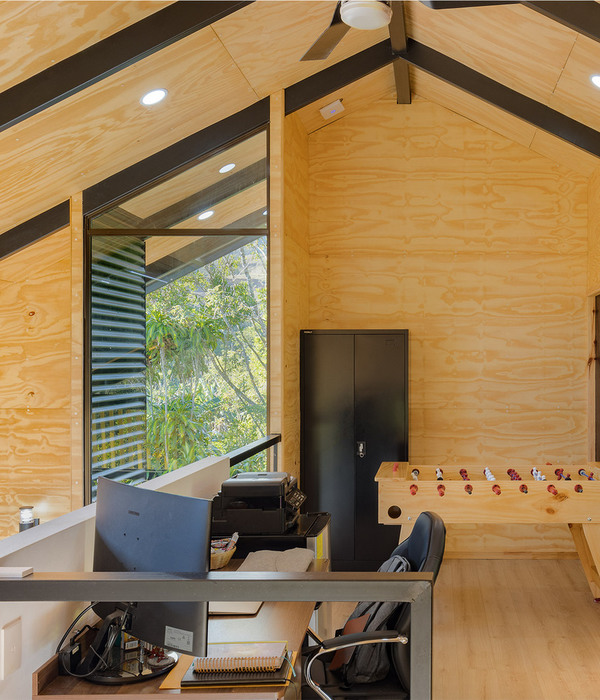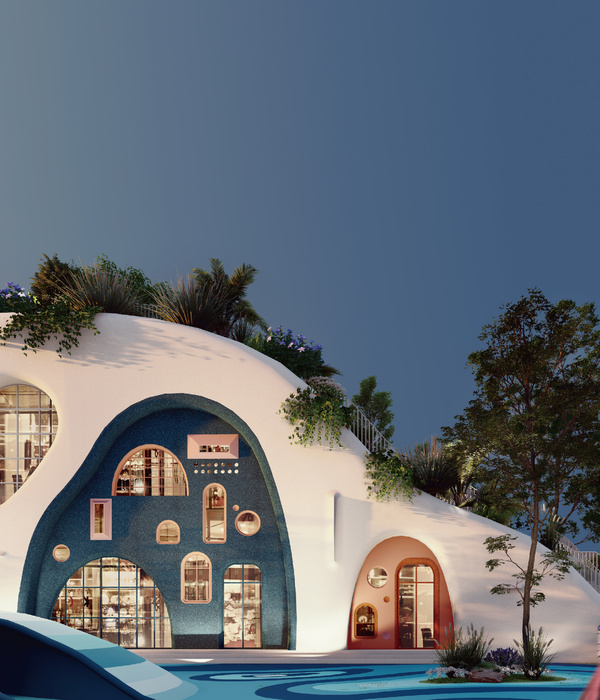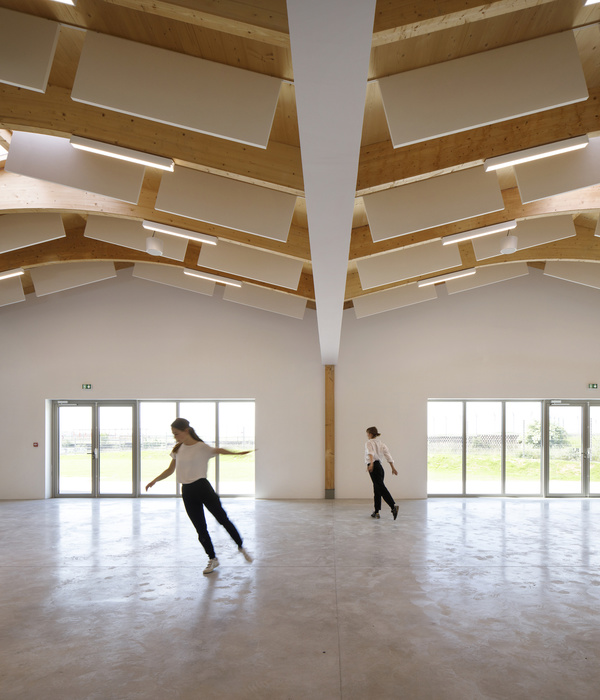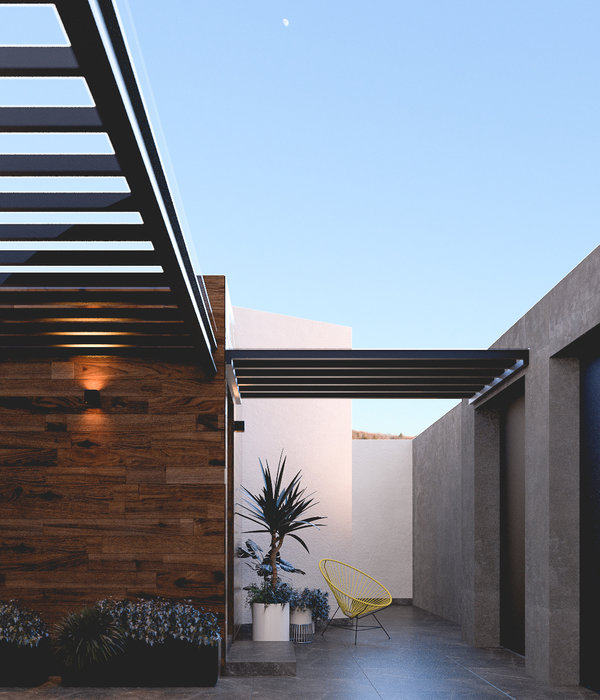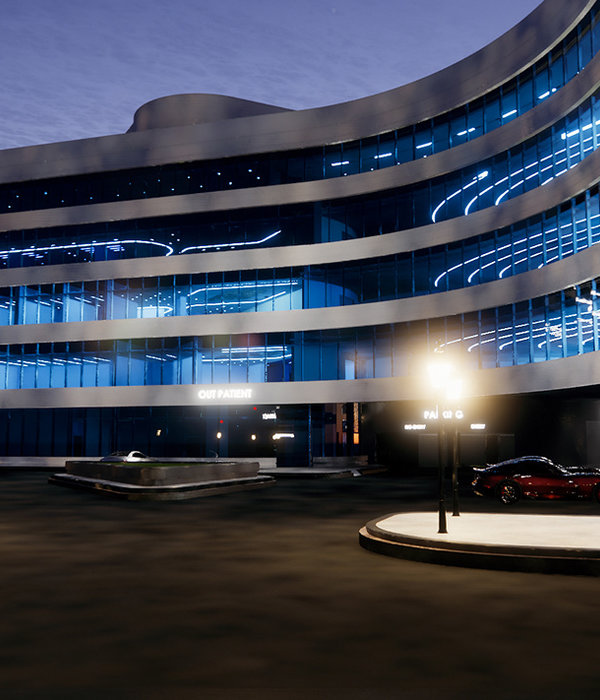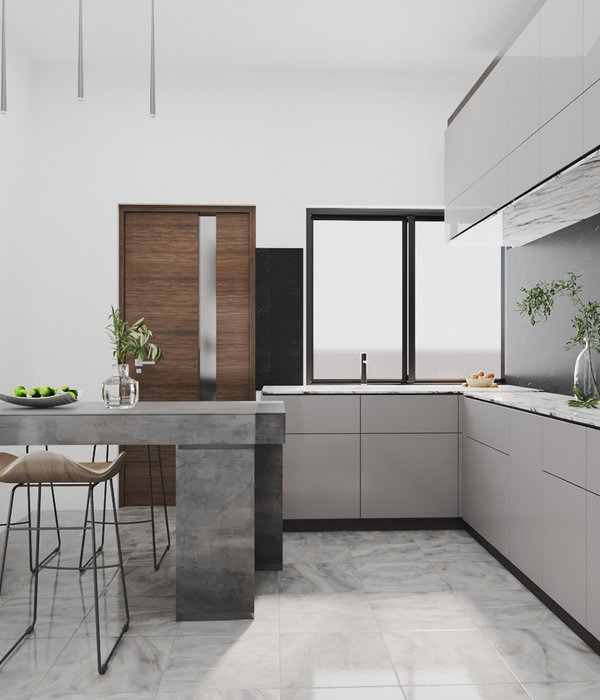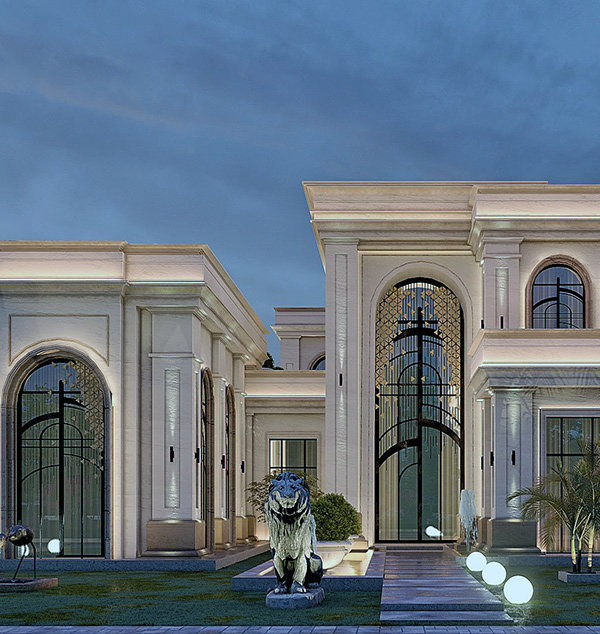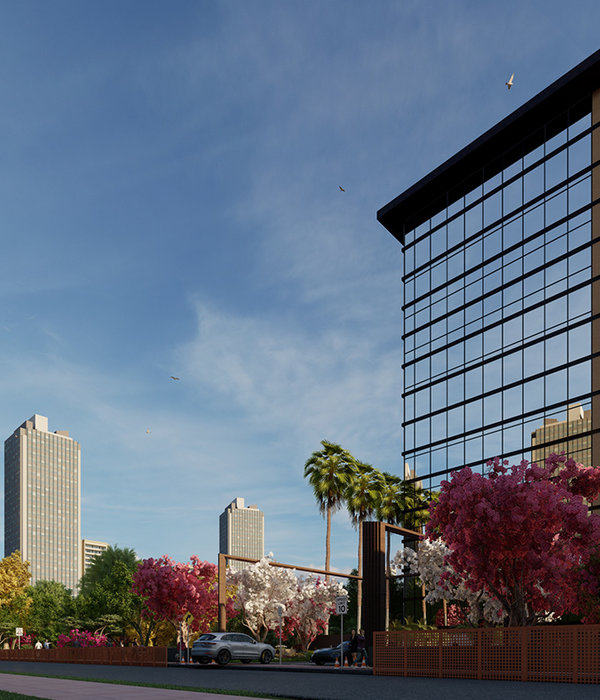- 项目名称:广东蕉岭乡村客厅
- 设计方:造作建筑工作室
- 公司网站:http:,,www.zaozuodesign.com,
- 联系邮箱:1260297209@qq.com
- 主创及设计团队:沈悦,戴文竹,包莹,盛仁,雷金剑
- 建筑面积:1992.3m²
- 摄影版权:赵奕龙
- 客户:卓创乡建
蕉岭棚屋落座在粤北地区的田野之间。作为一间乡村客厅,它完全开放,提供村民闲聚、暂留的可能,又具备一定的对外展示功能。
Jiao Ling Cabin is located in the midst of farmlands in the northern Guang Dong province. It is designed to be an open “living room” for villagers, and can be served as an exhibition space.
▼鸟瞰图,Aerial view ©赵奕龙
▼建筑外观,Exterior view ©赵奕龙
▼连接与对话,Connection and conversation ©赵奕龙
我们试图通过这次实践,实验一种新秩序的可能性。这种新秩序来自两个类型的结合,一种是蕉岭地区最普遍的传统建筑:围龙屋。另一种是当地大量出现的民间自发建构:屋顶棚子。
We experimented a combination of two styles in this project: a common local traditional architecture style– “Wei Long” house, and roof shades built by the locals.
▼棚子调研,Research on roof shades built by the locals ©造作建筑工作室
在设计起始之前,原场地东侧已有一组相对完好的老祠堂。我们将其与门前的池塘保留,作为轴心,其余的破败房屋需拆除重建。
We preserved the ancestral shrine and the pond to the east of the site, which serve as the axis of the project; and demolished other run-down structures.
▼场地组织,Site organization ©造作建筑工作室
根据半圆轴心的辐射,我们让新建筑在南、西、北三侧建立围合,西南角入,西北角出,新老建筑间的过渡区域形成内院。
The new structure is designed with a “C” shape according to the radial axis, where its southwest corner serves as the entry and northwest corner as exit. The transitional area between the old and new becomes a courtyard.
▼总平草图,General plan sketch ©造作建筑工作室
▼场地俯瞰,Site overlooking ©赵奕龙
这是一个自然而然的精神场所。在客家民居体系中,水是最重要的精神要素之一,所以我们决定在此放置一个浅水鱼塘。再以塘边闲亭的方式,重塑原本位于此处的破败房屋。
Water is an important spiritual element for the locals, so we decided to add a shallow fishpond, and in turn, reproduced the place’s original ambience with thoughtful placemaking – a place of spiritual significance.
▼内院,The courtyard ©赵奕龙
这个闲亭以生土营造技术作为“围合”,以框砼作为“骨架”,再通过T型钢挑件,使木构屋顶架于其上。
The cabin uses traditional rammed earth as its skin, reinforced concrete frame as its bones, and T shaped steel beams to support its wooden roof fafters.
▼亭子爆炸图,Diagram ©造作建筑工作室
▼闲亭光影,The cabin ©赵奕龙
在此之上,我们增加了两则在田野调查中发现的,有趣的偶然机制。一是“屋顶斜线”。我们将新建筑的三段屋顶都附于不同的屋脊斜率与檐口斜率,同时互相覆盖叠加。试图利用这种屋檐屋脊的不平行关系,破坏固化的村落天际线。
In addition, we added a couple of interesting features found during our field study – All three roofs have overlapping, slanted roof ridges and soffits. They help to break the monotonous skyline of the village.
▼“屋顶斜线”,打破固化天际线,Slanted roof ridges, break the monotonous skyline of the village ©赵奕龙
▼屋顶细部,Detailed views of the roof ©赵奕龙
其二是“立面递进”。即将每一开间作为一个单元体,沿着轴线按一定规律变化,形成立面构成规则。随着屋顶的倾斜,建筑正制造着自己的韵律。
▼立面草图,Facade sketch ©造作建筑工作室
▼墙身轴测,Axonometric drawing of the wall ©造作建筑工作室
The other feature is the progressive transition of facade – the exterior of each bay turns slightly from the next, creating a unique rhythm with the slanted roof.
▼“立面递进”,韵律,The progressive transition of facade ©赵奕龙
▼墙身大样,Wall details ©造作建筑工作室
出于对建筑语意的来源与再创造的纠结,我们在建造过程中尝试了多重的不确定性,试图探讨精神、屋顶、围合与地台的关系:池塘与地台的融合方式;不同斜率、挑檐、遮蔽率的屋顶覆盖;木构、竹编、砖砌,配合不同梯度、折叠的编织方式等等。
Trying to find the origin of, and the appropriate interpretation of the architectural semantics, we experimented with a variety of ways to understand relationships – spirit, roof, enclosure and ground plane; the connection between the fishpond and its surrounding pavement; different slopes of the roof and their opening percentage; the dialogue between wood, bamboo, masonry; and their interpolation.
▼闲亭,对不同工艺的探讨,The cabin,discussion on different craft ©赵奕龙
▼廊桥私语,The corridor and bridge ©赵奕龙
▼竹桥——螺旋穿梭,Shuttle in the bamboo bridge ©赵奕龙
▼竹构——编织光影,Bamboo cage,weaving light and shadow ©赵奕龙
最终,我们还是将其呈现出来。期待岁月之后,它可以逐渐被乡村消解、同化。
We put the building together, with the hope that it will eventually be weaved and absorbed into the dynamic fabric of the country side
▼西望,View from the west field to the building ©赵奕龙
▼竹构节点,Bamboo landscape structures ©赵奕龙
▼肌理总图,Site texture ©造作建筑工作室
▼场地总图,Master Plan ©造作建筑工作室
▼一层平面,1F plan ©造作建筑工作室
▼二层平面,2F plan ©造作建筑工作室
▼立面图和剖面图,Elevations and sections ©造作建筑工作室
▼场地剖透视图,Site sectional perspective view ©造作建筑工作室
▼竹构节点,Bamboo landscape structures ©造作建筑工作室
{{item.text_origin}}

